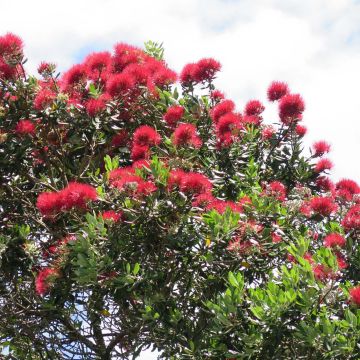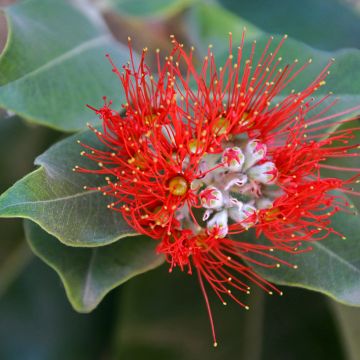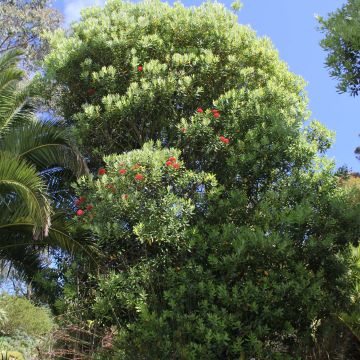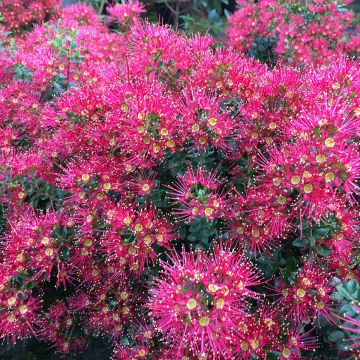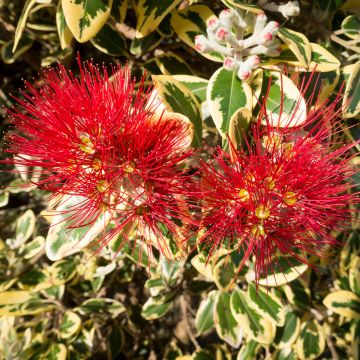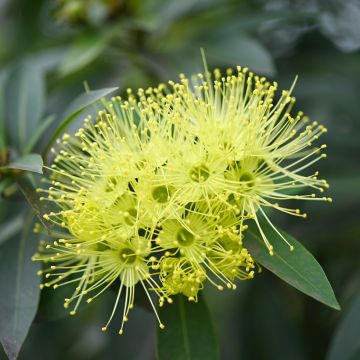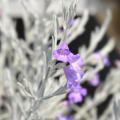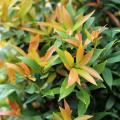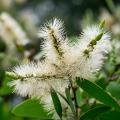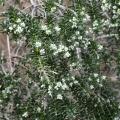Metrosideros
Would this plant suit my garden? Set up your Plantfit profile →
Available in 3 sizes
Available in 1 sizes
Available in 1 sizes
Available in 1 sizes
Available in 1 sizes
Available in 1 sizes
Available in 1 sizes
Available in 1 sizes
Metrosideros (excelsa, Mistral, ...) are bushes, trees, and climbers native to New Zealand belonging to the myrtle family, like Eucalyptus and Callistemon. They are decorative with their evergreen grey-green foliage and their flowers with bright red stamen pompoms. The flowers often appear at the end of the year, which has earned them the name New Zealand Christmas tree.
In our climate, they are very beautiful veranda or coastal garden plants that tolerate salt spray but dislike frost. The Metrosideros genus has about 53 species, the most common in cultivation being Metrosideros excelsa with spectacular flowers. These plants have a knotted trunk and branches adorned with aerial roots, some species are epiphytic, at least during their young age. The leaves, with their waxy appearance, are covered with a thick white felt on the underside. The flowers, most often bright red, can be yellow, orange, or white depending on the cultivars. Very nectar-rich, they are visited by bees and other pollinators.
The dimensions of Metrosideros vary considerably depending on their cultivation and their natural habit, with plants grown in pots showing much more modest growth. Metrosideros appreciates a fertile and well-drained soil, which is damp and slightly acidic. Plants grown in pots can be overwintered in an orangery or a cold greenhouse.
Haven't found what you were looking for?





































